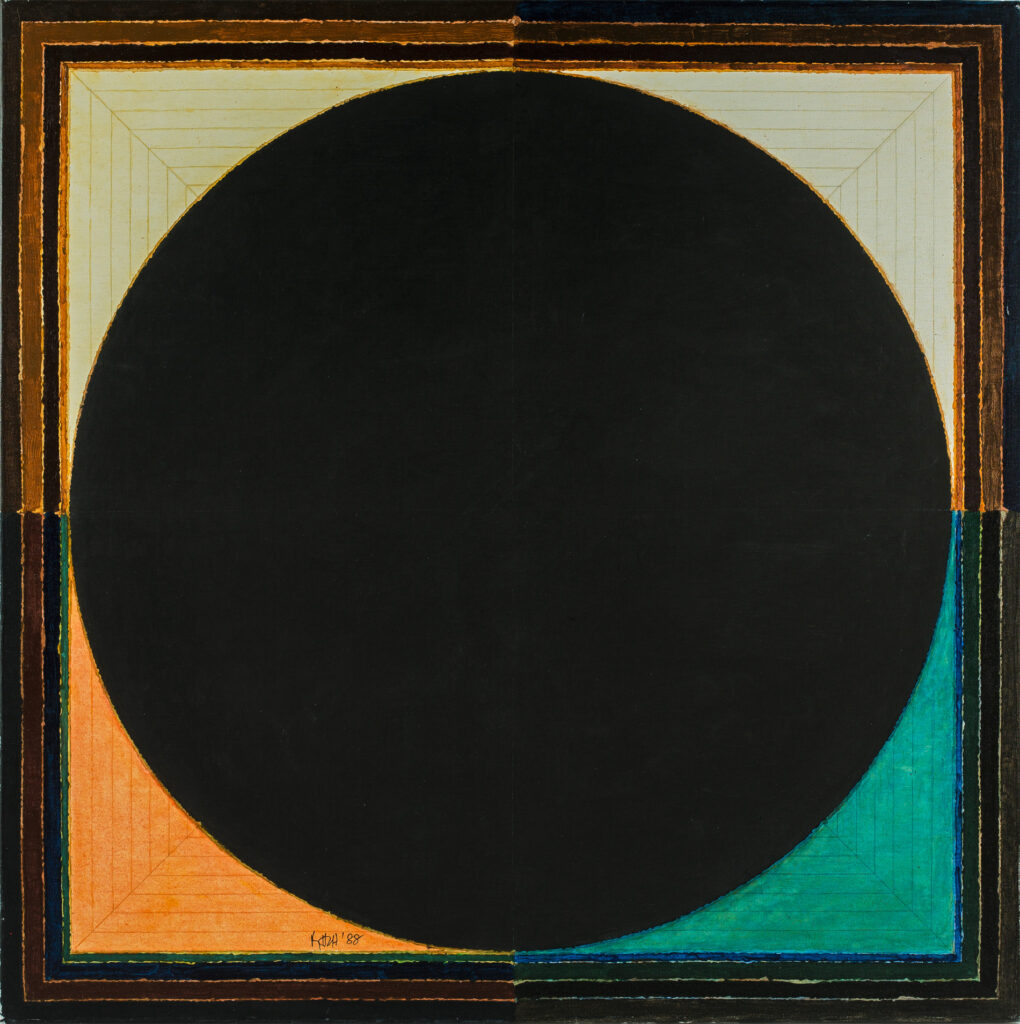

Sayed Haider Raza’s ‘Emergence’, published on the cover and inside of ‘Raza’ by Alain Bonfand and the cover lot of our upcoming auction on March 23-27, 2017.
In his meditations on colour and their emotive qualities, Raza was taken back to his childhood. It was a voyage, so to speak, back to the moist and pregnant ground where experiences were naked and free from the shell of words. This apprehending of the ‘source’ — the point of emergence — is a spiritual element captured best in the Bindu. This is arguably why it has remained pivotal to Raza’s repertoire.
Drawing from Raza’s own words: “The point, the Bindu, symbolises the seed-bearing the potential of all life, in a sense. It’s also a visible form containing all the essential requisites of line, tone, colour, gesture, and space.”
Since the 1970s, Raza began to visibly emphasize his Indian identity. This is evidenced in his frequent visits to India. His concepts and colors at the time were distinctly akin to Indian spiritual thought but their plasticity, however, remained their most striking quality. The Bindu figured prominently in his paintings in this period. It was a starting point that brought together geometry, color, space and several aspects of Indian aesthetics. The circle, one recalls, is a figure within which every geometric shape can be featured.
The late 1970s witnessed a considerable change in his style of painting. He preferred basic geometric figures and the primary palette in his compositions. The Bindu was reinstated in ‘Emergence’ (1988) as the centre of his contemplations: a radiant circle emerging from within a square, flanked by distinct carves of bright colour. The Bindu is black but illumined — a sighting of the source in the silent minute of meditation.
Understanding Raza: Many ways of looking at a Master, Vadehra Art Gallery, New Delhi, 2013, p. 52
Auction Catalogue-South Asian Art ‘Classical, Modern and Contemporary’-March 23-27, 2017